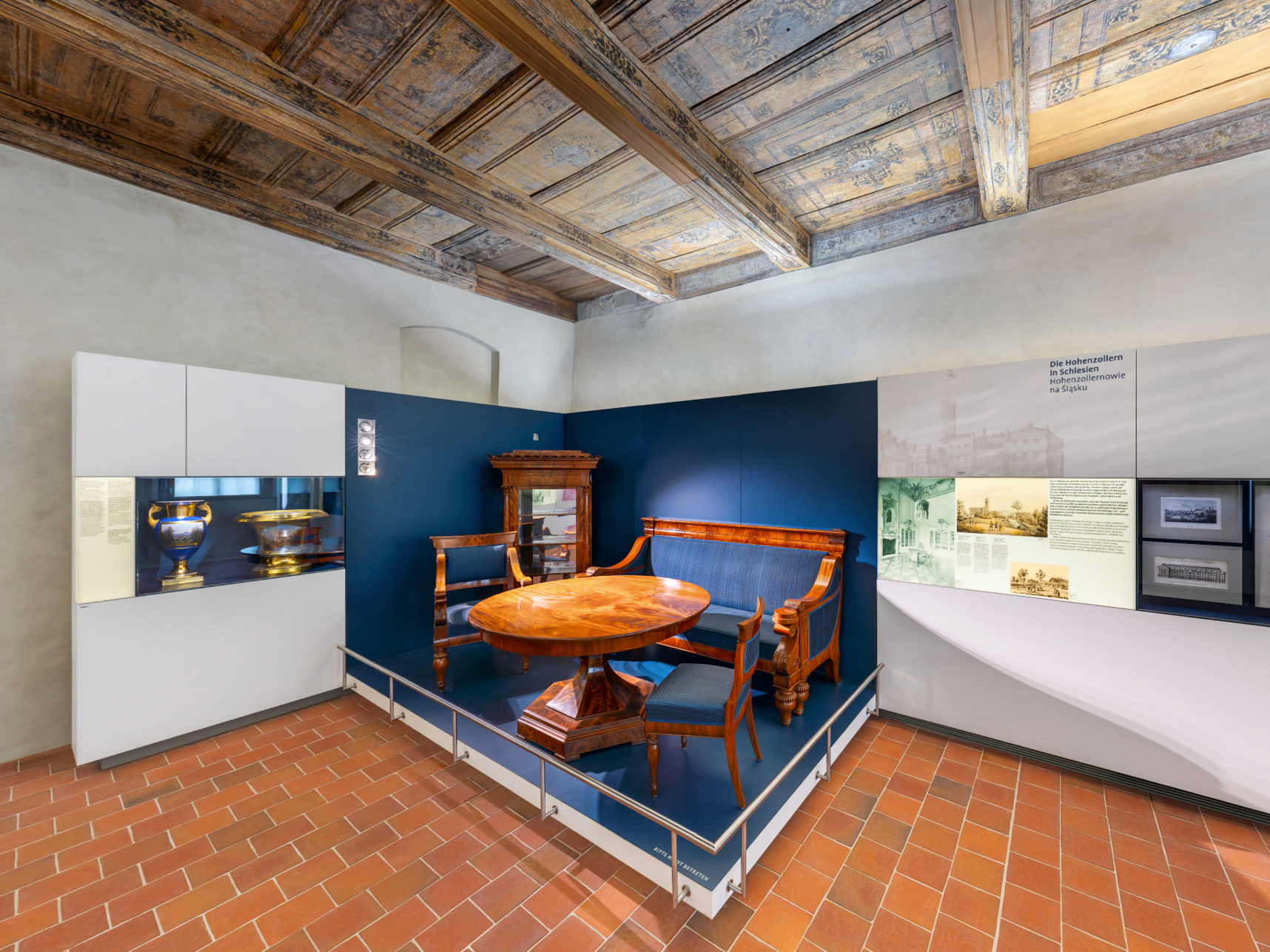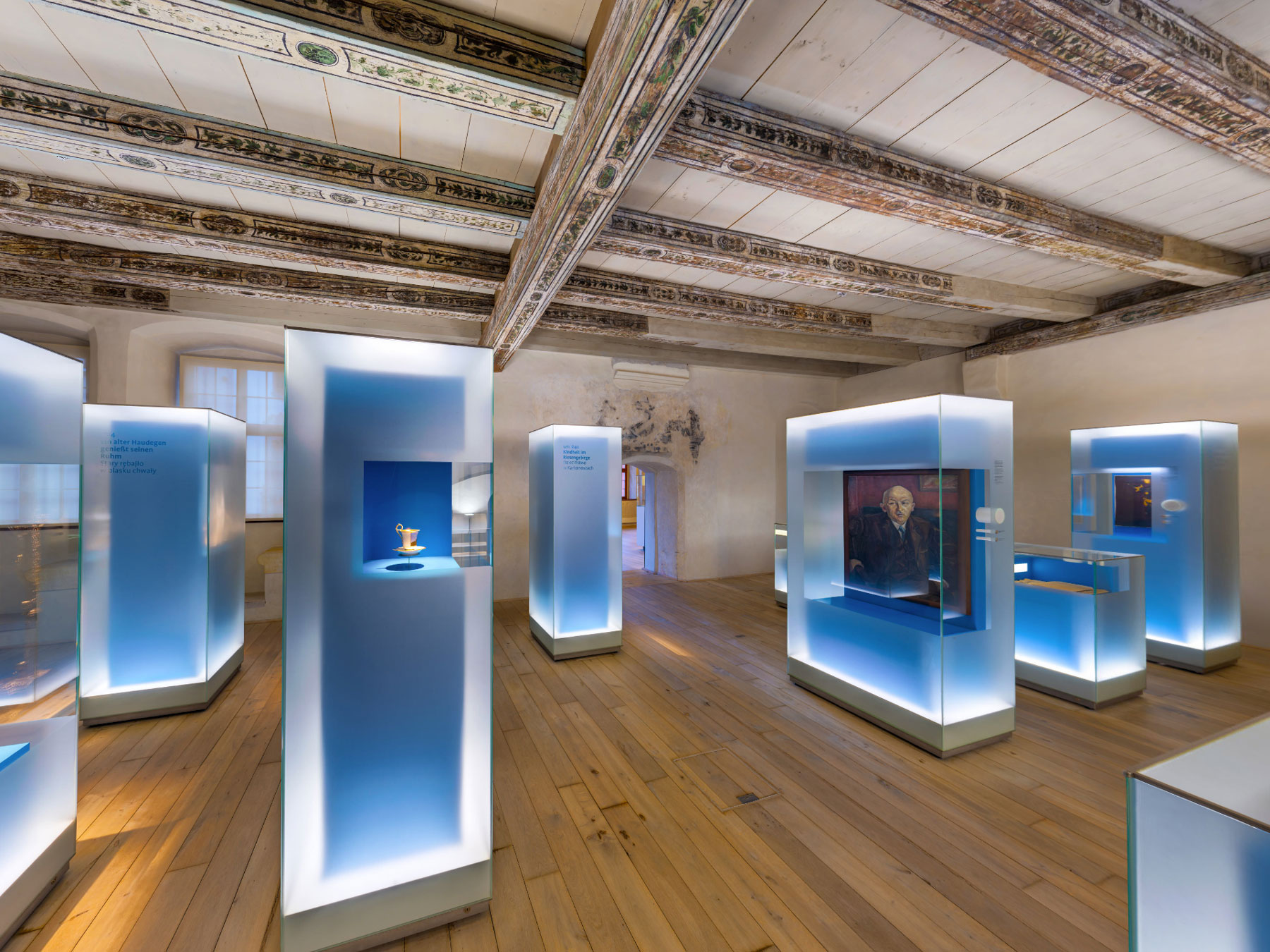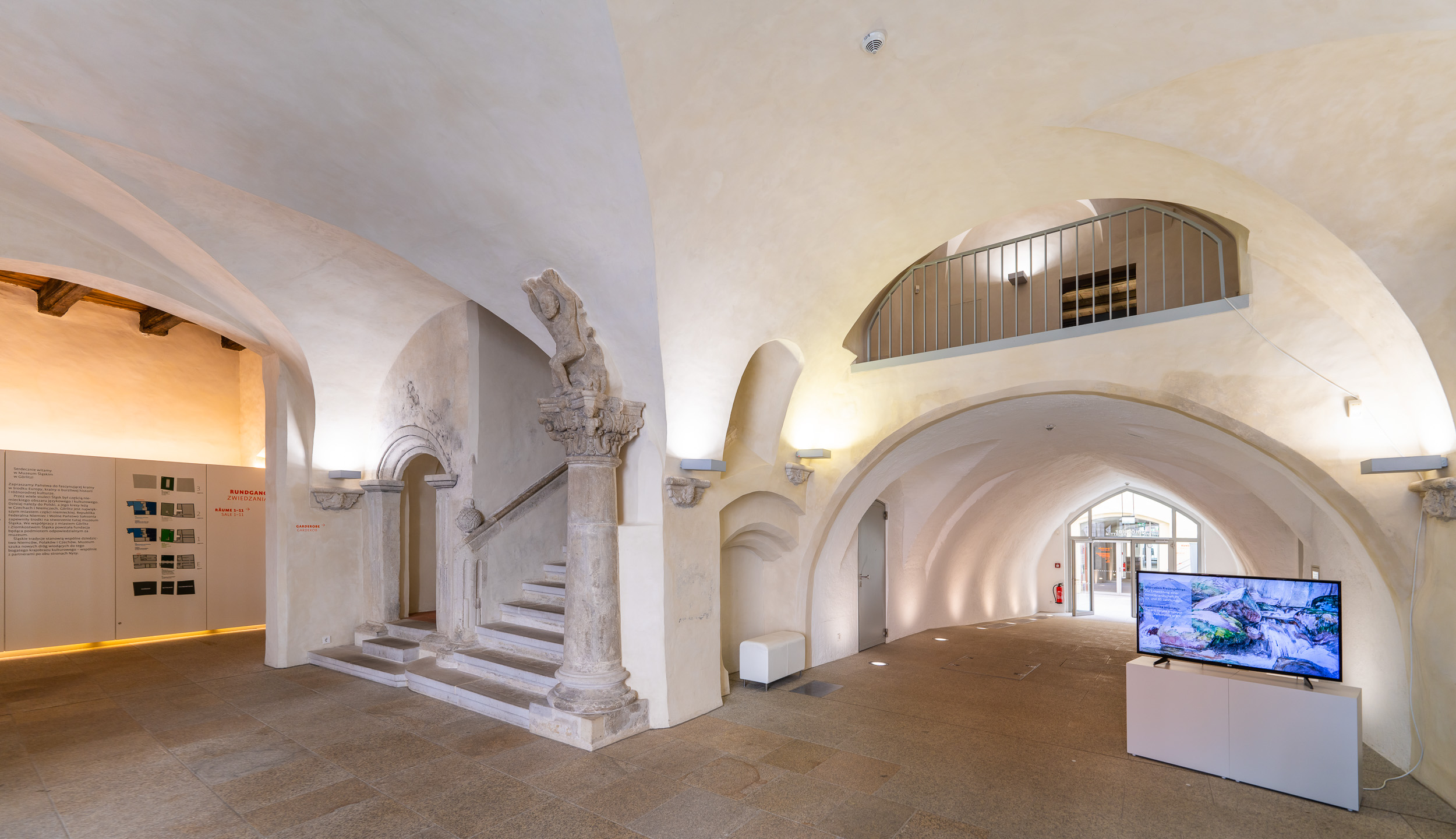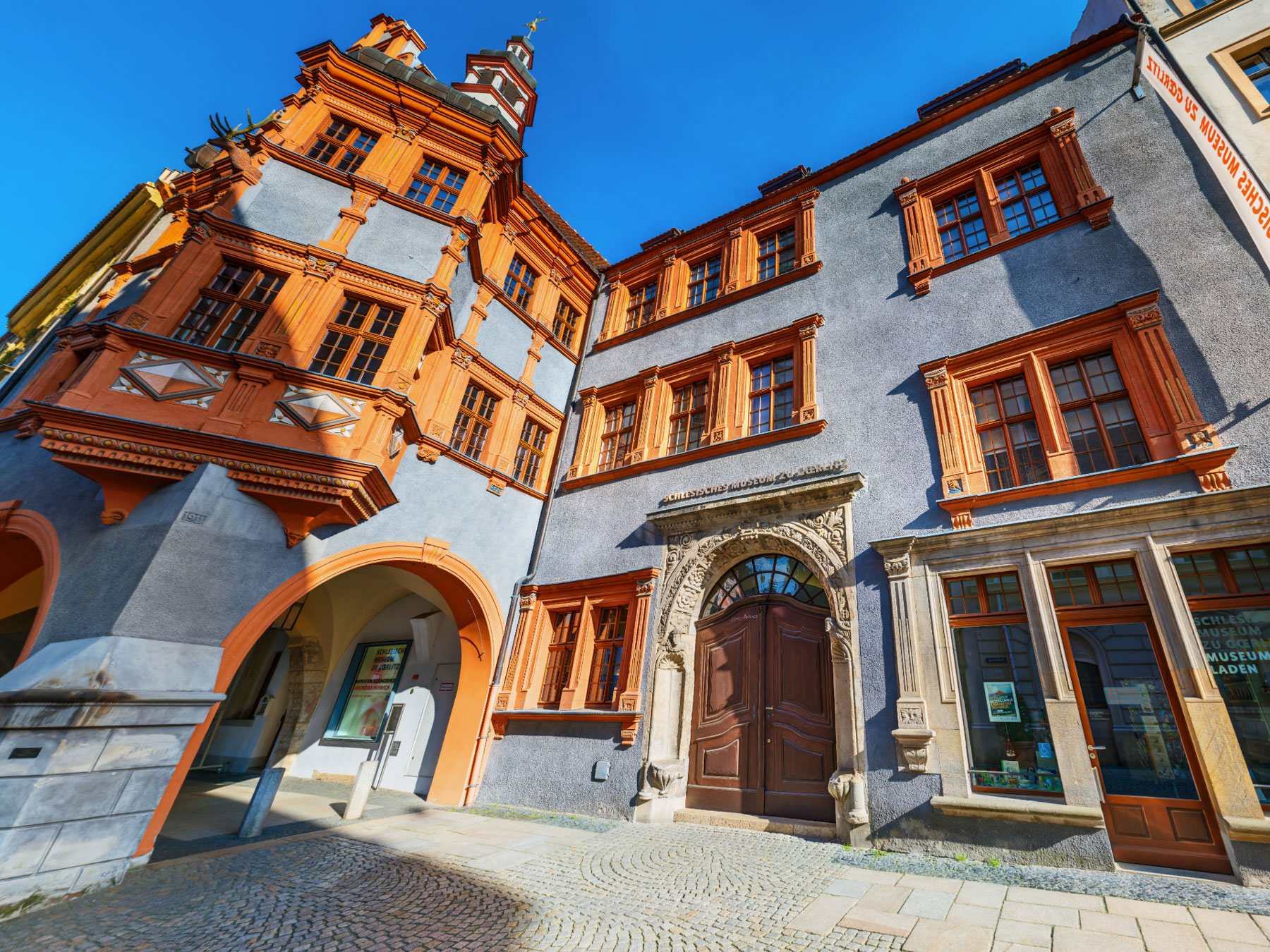
Festsaal: The Prussian era
Photographs
3D Models
Gigapanoramas
Silesia under Frederick II.
This room on the first floor was created at the end of the 15th century. Two fluted window columns from the early Renaissance and a particularly richly painted wooden ceiling from around 1570 characterise the former banqueting hall today. The exhibition here tells of the transformation of Silesia in Prussian times after Frederick II conquered the country in the three Silesian Wars (1740-63).
When the Schönhof was being renovated into a museum, the predecessor to this hall, which was built around 1400 and could be reached from the ground floor via several steps, was discovered. The floor level was around three metres lower than that of the later room, the wall surface was partially panelled and painted with colourful draperies up to a height of two metres.
Today, it houses an exhibition on the Prussian history of Silesia since 1740.
SILESIA BECOMES PRUSSIAN
For centuries, Silesia was politically, economically and culturally orientated towards Bohemia and the Catholic south of the empire. This changed radically when Frederick II of Prussia conquered the country in 1740/41.
Silesia now became part of a Protestant state. Its fate was linked to Prussia, this rising and expansive power in north-east Germany. The system of enlightened absolutism prevailed in Silesia and characterised economic and social life. The state and administration were modernised.
The conquest of Silesia marked a turning point in German history. Prussia’s rise to great power status began.
INCORPORATION INTO THE PRUSSIAN STATE
The Prussian conquest led to an overthrow of the state constitution, even if Silesia retained a special legal position in the Frederician state. The traditional supremacy of the estates was broken. A provincial minister, who was directly subordinate to the king, became the head of the administration. War and domain chambers in Breslau and Glogau took over the tasks of fiscal, financial and economic policy as central authorities. Silesia was divided into military cantons and was to maintain a standing army of 35,000 men, around ten times more than in Austrian times.
The state pursued an active immigration policy. With a bundle of measures, it favoured crafts and trade in the towns and the development of Upper Silesian industry. Religious freedom was granted. The spirit of the Enlightenment and rationalism characterised the education system and cultural life.
THE HOHENZOLLERNS IN SILESIA
Frederick II and his successors emphasised the importance of the province of Silesia within the Prussian state through their frequent personal presence. Frederick himself took an active part in the reconstruction of the country after the Silesian Wars on his annual inspection trips. Wroclaw was given the status of a third Prussian royal seat, alongside Berlin and Königsberg.
The Hohenzollerns travelled to Silesia not only on political business, but also in search of recreation and relaxation. In the 19th century, the royal family repeatedly spent their summer holidays at Erdmannsdorf Castle in the Hirschberg Valley – and contributed to the discovery of Silesia as a holiday destination by Berlin’s aristocratic society.
See similar attractions!
On a 2000 m2 exhibition space, visitors can explore approximately 1000 exhibits from the history of Silesian culture.
)
)
)
)